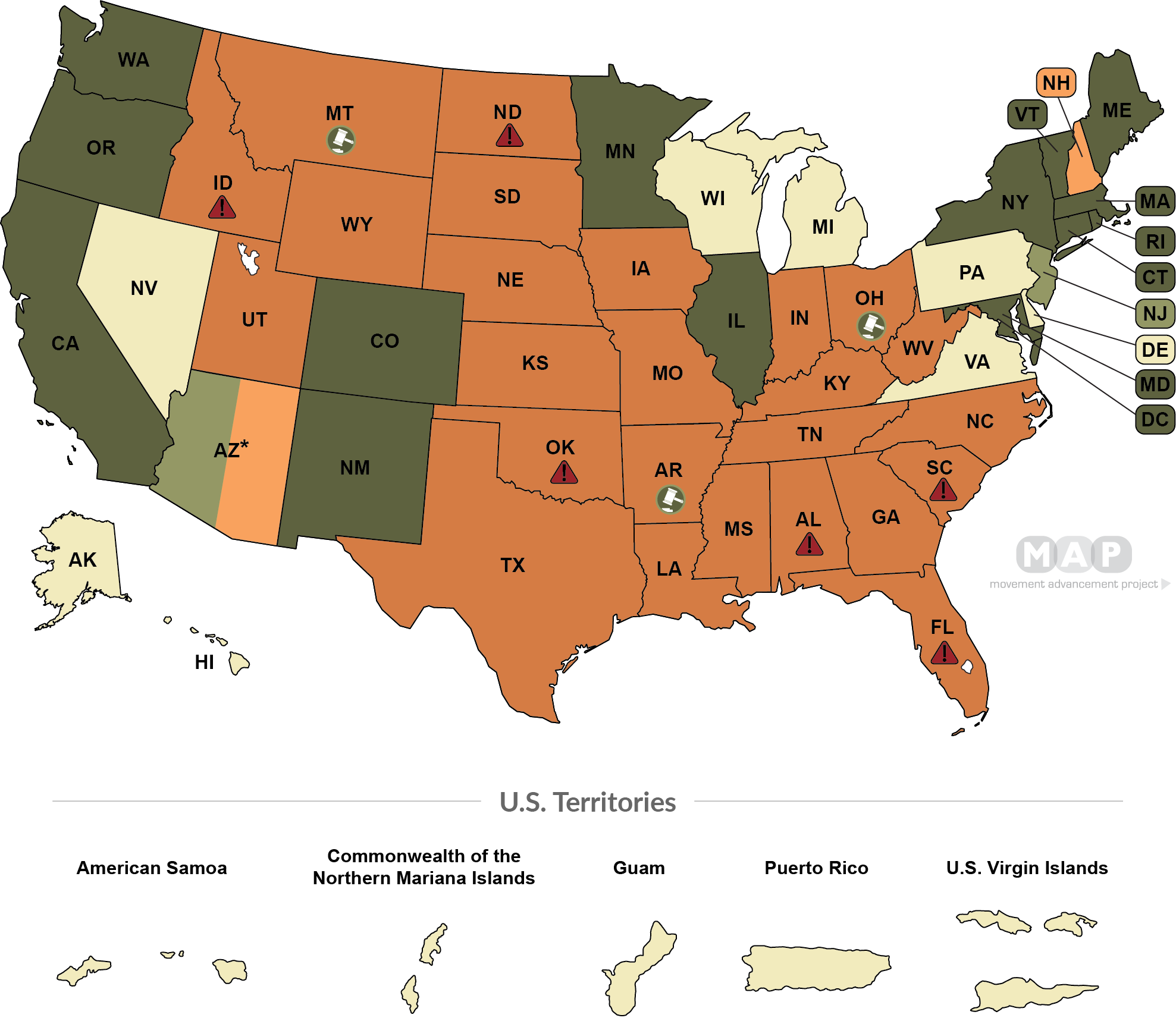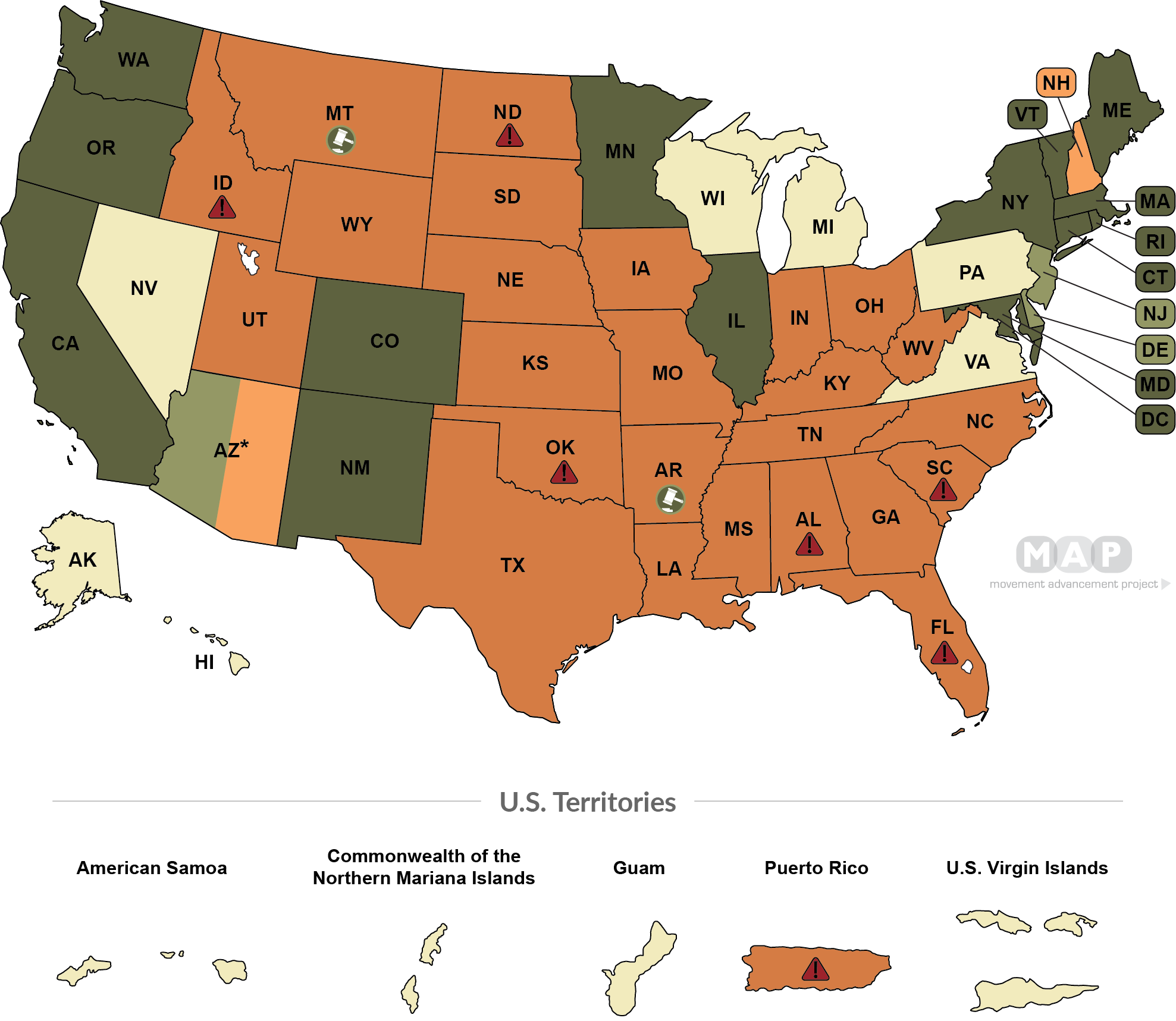*Notes (and see the "Citations" tab or click "Citations & More Information" below the map legend for more information about every state):
-Arizona banned surgical care for transgender minors in 2022, but in 2023 a new governor issued an executive order with "shield" style protections for transgender health care that is still legal in the state. Go to the transgender healthcare "shield" Equality Map to learn more about these laws.
-Multiple states have "grandfather" clauses, "weaning off" clauses, or limited exceptions for some transgender youth and/or for some types of medication. Click "Citations" to read more detail about each bill or to access the law's language directly.
There are at least 17 lawsuits challenging different states' bans on best practice medical care for transgender youth. Click "Citations & More Information" beneath the map legend for more information about these lawsuits. Bans Permanently Blocked
The following laws are permanently blocked from being enforced, though appeals may be ongoing. Transgender youth should still be able to access care legally.
-Arkansas: In June 2023, a federal judge blocked the state's 2021 ban, ruling it unconstitutional. However, the state has said it will appeal the ruling, and the state also passed a new law in 2023 (effective 90 days after the legislature adjourns) that will allow individuals who receive gender-affirming care as minors (or the family members of those minors) to sue their medical providers for malpractice, among other provisions. The 2023 permanent block builds on an earlier temporary block issued in July 2021.
-Montana: In May 2025, a judge blocked the state's ban, ruling it unconstitutional, though the state may yet appeal. The 2025 block builds on an earlier temporary block issued in September 2023..
Bans Temporarily Blocked (In Full or In Part)
The following laws are at least partially blocked from being enforced, though these court cases are still ongoing. Transgender youth should still be able to access care legally to the extent each of these blocks allow.
-None at this time, though Arkansas and Montana are blocked as noted above.
Bans Not Yet in Effect (In Full or In Part)
-New Hampshire: The state's 2024 ban on certain surgical care is in effect, but the state's 2025 bans on other types of surgical care and prescription medication for transgender youth will not go into effect until January 1, 2026. Additionally, the ban on prescription medication contains a grandfather clause for youth receiving those prescriptions prior to January 1, 2026.
Recommended citation:
Movement Advancement Project. [Year of access]. "Equality Maps: Bans on Best Practice Medical Care for Transgender Youth."
https://www.mapresearch.org/equality-maps/healthcare/youth_medical_care_bans. Data as of [day of access].





